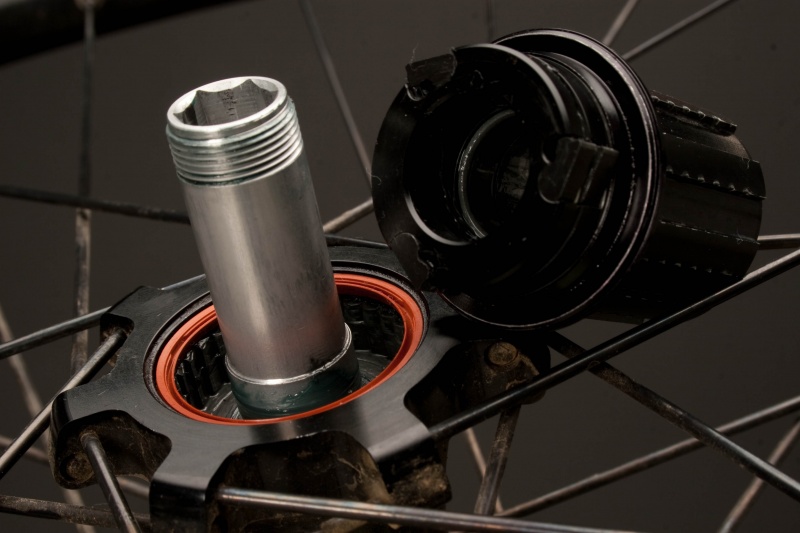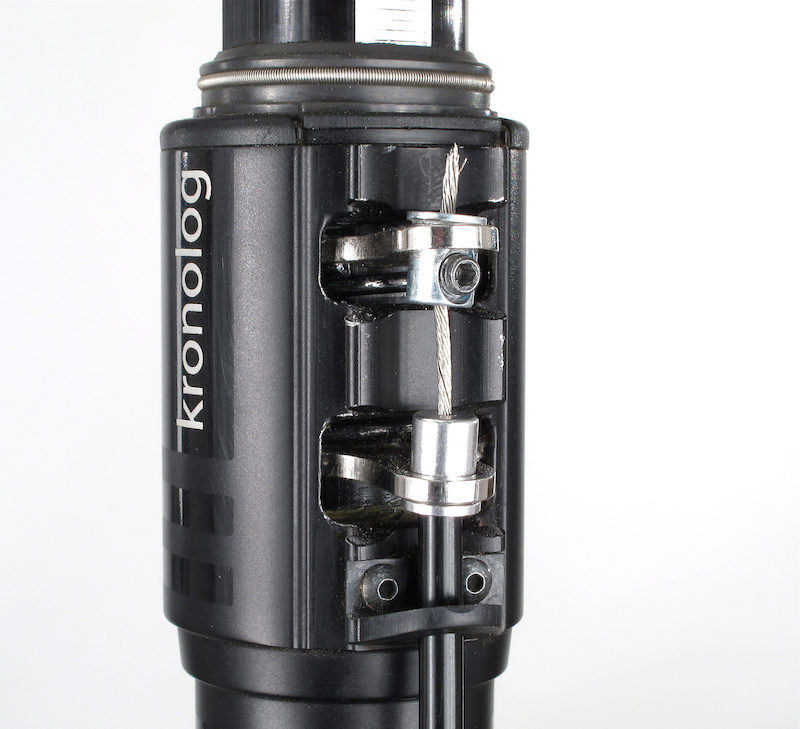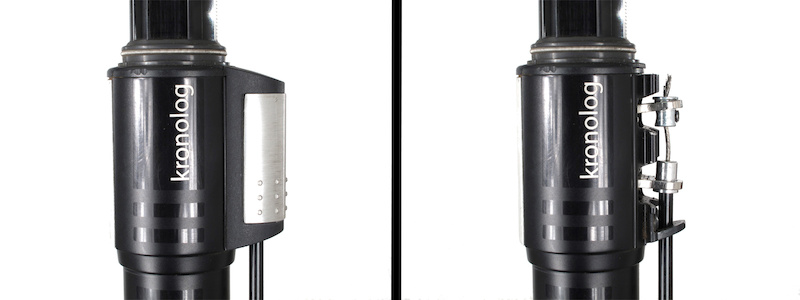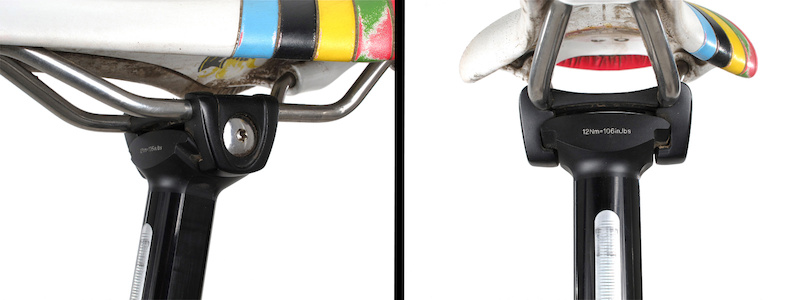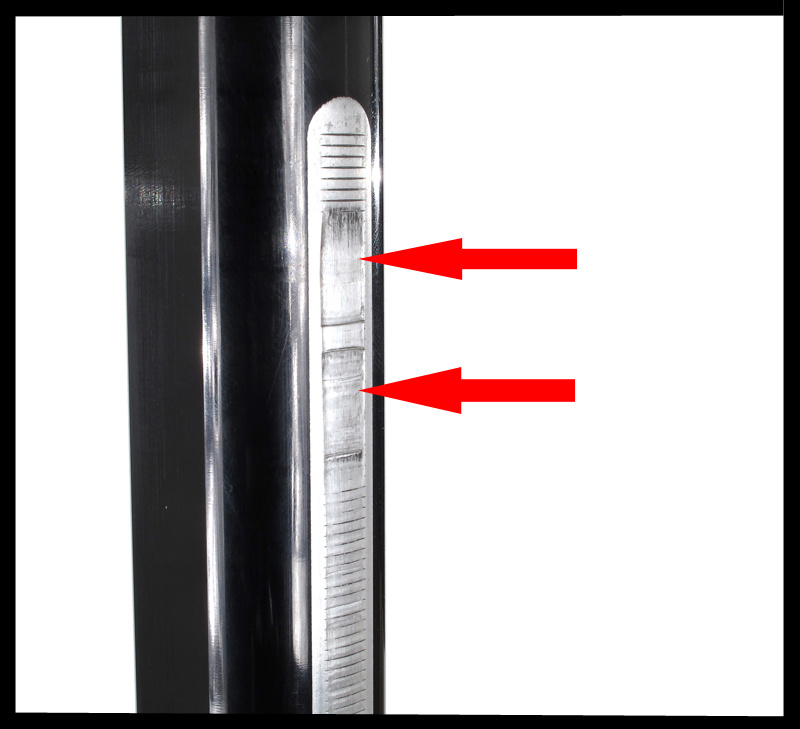- Тема: Где и как починить педали Crank Brothers?
- crankbrothers велосипедный подседельный штырь
- Side Refine Panel
- Посмотреть по категориям
- Посмотреть по параметру Диаметр товара
- Тема: Подскажите как снимается барабан crankbrothers
- Подскажите как снимается барабан crankbrothers
- Crankbrothers Kronolog Telescoping Seat Post Review
Тема: Где и как починить педали Crank Brothers?
Опции темы
Поиск по теме
Отображение
Люфт на обеих педалях буквально после пары гонок. Что делать?
снял черную крышку сбоку, там гайка. Не крутится ни в одну сторону.
Кстати вот эти педали
Да и оч болтается синяя пружинка. Т.е. я когда еду, нога болтается оч сильно в педали из-за слабины пружины. Железочка болтается. Как ее закрепить то. Жалко все таки 3500руб потраченные на педали для пары гонок (
Люфт на обеих педалях буквально после пары гонок. Что делать?
снял черную крышку сбоку, там гайка. Не крутится ни в одну сторону.
Кстати вот эти педали
http://www.chainreactioncycles.com/M. ModelID=13050
Да и оч болтается синяя пружинка. Т.е. я когда еду, нога болтается оч сильно в педали из-за слабины пружины. Железочка болтается. Как ее закрепить то. Жалко все таки 3500руб потраченные на педали для пары гонок ([/b]
на сайте кранкбразертс есть видео ко всем педалям. как их разбирать и менять детали с помощью ремкомплекта.
нога может люфтить. влево вправо. это нормально.
если люфтит вверх/вниз, то хз что делать. у меня есть юзаные педали с шатающейся втулкой, а есть новые, в которых ничего вообще не люфтит. так нога немного шатается в обоих педалях. может с тапками что не так.
починят тебе все это в омнибайке. если мастер захочет. если из Москвы ты
Источник
crankbrothers велосипедный подседельный штырь
Side Refine Panel
Посмотреть по категориям
- Компоненты и запчасти для велосипеда
- Велосипедные подседельные штыри
- Насадки для руля велосипеда
- Подшипники для велосипеда
- Велосипед болты и крепеж
- Велосипед нижние кронштейны
- Велосипед тормозные рычаги
- Тормозные колодки для велосипеда
- Тормозные диски для велосипеда
- Велосипедные тормоза
- Комплекты для сборки велосипеда
- Велосипед кабели и оборудование для жилищного строительства
- Велосипед кассеты и звездочки
- Защитные кожухи приводной цепи и средства противоударной защиты велосипедов
- Велосипедные цепные кольца и звездочки BMX
- Цепи для велосипеда
- Велосипед шатунов
- E-bike компоненты
- Вилки для велосипеда
- Велосипед передние переключатели скоростей
- Велосипед захваты, лента и накладки для руля
- Велосипедный руль
-
- Велосипед гарнитуры распорки
- Гарнитуры для велосипеда
- Втулки для велосипеда
- Педали велосипеда
- Колки для велосипеда
- Велосипед задние переключатели скоростей
- Задние амортизаторы для велосипеда
- Обода для велосипеда
- Велосипедные седла и сиденья
- Велосипед зажимы для подседельного штыря
- Рычаги для велосипеда
- Велосипед для шампуров
- Велосипедные спицы
- Велосипед стебли
- Другие запчасти и компоненты для велосипедов
Посмотреть по параметру Диаметр товара
Отображается слайд
Перейти к предыдущему слайду — Посмотреть по параметру Диаметр товара
Источник
Тема: Подскажите как снимается барабан crankbrothers
Опции темы
Поиск по теме
Отображение
Подскажите как снимается барабан crankbrothers
Собственно, коллеги, подскажите, как снять/поменять барабан задней втулки на колёсах crankbrothers 12-го года, кобальты. Просто так он не вынимается, подозреваю, что внутри он каким то образом зафиксирован.
Cоздать тему не дают, поэтому спрошу здесь.
Пытаюсь снять барабан с задней втулки easton 2014 г.
Вопрос первый: правая или левая резьба у гайки, которая ее держит?
Второй: насколько огромен момент, которым ее затянули с завода?
И, может быть, у кого-то есть фотка разобранного барабана?
Заранее благодарен.
Vla_dim, Cann0n, в обоих случаях — необходимо стянуть с оси концевик конвертор, иногда довольно жёстко держится на резиновом колечке в проточке, аккуратно без рывков потянуть за барабан.
Алексей Иванович,
Да тянул я его, а он ни фига и у меня втулка под эксцентрик, я естественно ось вынул перед тем, как тянуть, ось вынимается вместе с подшипником, который со стороны барабана.
Может кассету прикрутить и с её помощью вынуть или выколотить как нибудь?
Цель мероприятия — заложить новой консистентки, туда где собачки и ретчет (так он зовется вроде).
Cann0n, там разница только в конверторах концевиках, по фиг что под эксцентрик. У тебя какая модель? Мне не доводилось иметь дело с cobalt 1, все которые мне известны, устроены так:

и в частичной разборке выглядят так:
да, иногда приходится приложить значительное, но контролируемое усилие, одновременно покачивая барабан
———- Добавлено в 20:57 ———- Предыдущее сообщение было в 19:58 ———-
Cоздать тему не дают, поэтому спрошу здесь.
Пытаюсь снять барабан с задней втулки easton 2014 г.
Вопрос первый: правая или левая резьба у гайки, которая ее держит?
Второй: насколько огромен момент, которым ее затянули с завода?
И, может быть, у кого-то есть фотка разобранного барабана?
Заранее благодарен.
Vla_dim, какая модель? Если с резьбовым концевиком, то:
с не резьбовым, например:
Все 70, 90, Heaven, с которыми работал, были не резьбовыми. Оси выглядят так:
Источник
Crankbrothers Kronolog Telescoping Seat Post Review
Crankbrother’s Kronolog telescoping seat post steps away from the hydraulic internals that were used within the infamous Joplin design, instead utilizing a full mechanical layout that greatly resembles the locking plate system found on bar clamps. The design makes the Kronolog the only mechanical post that is infinitely adjustable, allowing users to select any seat height between its fully dropped and fully raised positions. Total available travel is 125mm, although that number can be lowered by way of an internal spacer. The 465 gram Kronolog retails for $300 USD, and is available in 30.9 and 31.6mm sizes.
— Adjustment range: 125mm/5in (can be lowered 20mm via an internal spacer)
— Infinite height adjustment
— Operated by a bar mounted remote w/ a standard shift cable (4mm brake housing recommended)
— Diameters: 30.9mm, 31.6mm
— Post length: 405mm
— Weight: 465g/28g (30.9mm post/remote)
— Warranty: 2 years w/ proper maintenance
— MSRP: $300 USD» width=»800px» src=»https://ep1.pinkbike.org/p6pb8070685/p4pb8070685.jpg»/>
Crankbrothers Kronolog details:
— Adjustment range: 125mm/5in (can be lowered 20mm via an internal spacer)
— Infinite height adjustment
— Operated by a bar mounted remote w/ a standard shift cable (4mm brake housing recommended)
— Diameters: 30.9mm, 31.6mm
— Post length: 405mm
— Weight: 465g/28g (30.9mm post/remote)
— Warranty: 2 years w/ proper maintenance
— MSRP: $300 USD
Locking Plates: A set of twin steel plates, each one encircling the post’s upper tube, sit within the larger diameter portion of the post’s lower tube. A spring positioned between the plates pushes them apart, forcing both the forward and rearward inner edges of plates into contact with the upper tube, which in turn holds it steady from rising or lowering. When the remote lever is pushed the cable pulls the plates together so that they are parallel with each other, allowing the upper tube to cycle freely. Release the remote lever and the spring between the plates force them apart at an angle into the upper tube’s clamping surface. The system may sound complicated at first, but it is actually one of the simplest telescoping post designs out there, with possibly only the Gravity Dropper being more straightforward. Crankbrothers is quick to point out that the inspiration for the post’s locking mechanism comes from the locking plate design found on bar clamps, a system that has been in use for countless years.
An air spring is employed to raise the saddle, with it being adjustable via a schrader valve at the bottom of the post. Air pressure is recommended to be set between 55 and 75psi, which will also effect the effort it takes to lower the post. Adding air will speed up the Kronolog’s return speed, while lowering the pressure will slow it down.
Stationary Cable: The Kronolog’s clamping mechanism is tucked away inside the larger diameter section of the lower tube that, when the post is installed into your bike, sits just above the frame’s seat post clamp. This brings us to what is likely the Kronolog’s most attractive feature: the design means that the actuation cable is stationary — it does not move as the post goes through its travel — so that there will not be a surplus of cable loop that can rub on your leg or rear tire when the seat is in its lowered position. Riders who have had to use copious amounts of zip-ties to keep their dropper post cable in line will likely appreciate this, although the design also limits the Kronolog’s insertion depth. The Kronolog measures 217mm/8.5» from maximum insertion to the saddle rail clamp when at full height, compared to a Reverb’s 195mm/7.6» height. Riders with short legs take note, the Kronolog may not work for you.
The post is operated remotely (there is no post mounted lever option) via a hinged, bar mounted lever that can be fitted to the top or bottom of either side of the handlebar. The sturdy looking remote is home to the shift cable that operates the post, with a small spring fitted under the cable head in order to take up the 3 — 4mm of cable slack that the Kronolog requires to function properly. A barrel adjuster makes tuning cable tension easy, and the post comes from Crankbrothers pre-strung with 4mm brake housing that offers more flexibility than shift housing.
Setup: The Kronolog comes ready go out of the box with a cable and housing already installed, but we stripped it down in order to see how easy it was to setup the post up from scratch. Fitting a cable is relatively simple, and Crankbothers’ illustrated instructions do a good job of explaining how to go about it. There is a small and very important spring, positioned under the cable’s head that can be easily lost if you are not paying attention, that allows for 3 — 4mm of lever free play before cable tension is applied to the post’s locking mechanism. This part of the setup is crucial for consistent action from the Kronolog — too much cable tension and the post will lower or raise on its own, so it is important to get it correct. A barrel adjuster on the remote lever makes this task easy, and the lever is also hinged for straightforward installation and removal. We installed ours on top of the bar at the left side, but it can be positioned on the top or bottom of either side.
The saddle clamp is a single bolt affair, although it appears to be offer quite a bit more support than what was employed on the older Joplin post. The torx head bolt is to be clamped at 106 in/lbs, and the female side to the clamping bolt is captured within the post’s head to make fitting a saddle as easy as possible.
On The Trail: The Kronolog has close to zero play at the nose of the saddle, much less than what we’ve seen from other designs. This lack of movement is down to a few reasons: it’s forged upper tube employs flat sides that mate with a bushing chosen specifically for each post, and the twin locking plates also grip firmly to help take out any wiggle. Having said that, we’ll admit the even the worst offending posts in this regard don’t have us noticing their excessive play when on the bike, but it is nice that the Kronolog is the tightest feeling of the many posts we’ve tested. The remote lever is also among the most ergonomic that we’ve used, with the thumb paddle in just the right spot in relation to its bar clamp. Its thin, hinged mounting band takes up very little real estate, letting you position it where it makes the most sense for you.
The Kronolog’s most talked about feature has to be its stationary cable entry point located on its lower tube, meaning that the cable stays put as the post goes through its travel. This is in contrast to the majority of the competition who’s actuation cable terminates at the post’s head. The latter design often necessitates creative cable management with far too many zip-ties, and even then it is common to either have surplus cable hang out from the bike that rubs on your leg or rear tire when the saddle is lowered. No such complications with the Kronolog: size the cable to the correct length and forget about it. Some riders may not be fans of the bulbous ‘growth’ on the lower tube that houses the cable entry point and locking mechanism, but form follows function with the Kronolog.
The post’s action is reasonably smooth in a mechanical sort of way, even after many rides in nasty conditions and an equal amount of abusive cleanings with a power washer. Hit the lever and the saddle rises or lowers fluidly, although it does take slightly more force to lower than some of the competition. The ability to infinitely adjust the saddle height is beneficial on steep and technical climbs where a slightly lower center of gravity can lift your confidence. The same can be said on rolling or technical portions of flat trail, both scenarios where a slightly lower seat height can make a world of difference. Having also used telescoping posts that offer a set ‘cruiser’ position that is slightly lower than full height, we have to say that we do prefer the Kronolog’s infinite adjustability that allows you to decide the height that works best for you. The twin locking plate design will also not allow the saddle to be pulled up when already lowered unless the remote is pushed, a plus if you ever have to lift your bike by its seat when out on the trail.
Required lever force isn’t excessive, but you are fighting the spring between both locking plates, forcing them together to free the upper tube, and you can feel this in your thumb. Pushing the remote lever while weighting the saddle results in it dropping freely, unlike some of the mechanical designs out there that require you to unweight the saddle slightly to keep the mechanism from jamming. This, along with the very ergonomic remote, go a long way in making the post highly intuitive when in the heat of the moment on the trail.
There is a lot to like about the Kronolog post, but we still wouldn’t call it trouble free. The design uses air pressure to raise the saddle, a system that is clearly going to be much lighter than a coil spring, but it isn’t without issue. The post’s return speed slows noticeably as it nears the top of its travel, a trait that Crankbrothers’ boasts ». allows the saddle to return to a normal riding position in two, smooth stages» but, more often than not, it just left us wondering if it was actually at full extension. An audible noise, a simple ‘klunk‘ when it tops out, would be welcomed to let the rider know that yes, the post is at its full height. The air spring had the same effect at the opposite end of the stroke, sometimes making it difficult to get it to fully lower in the heat of the moment, and even requiring a firm push with the bum to get that last bit of travel out of it. While accessing the final 10mm of the Kronolog’s stroke might not seem like a big deal, its 125mm of travel should be easily available. The post’s single bolt saddle clamp also rotated once under us, putting the saddle at a wonky angle and further enforcing our belief that all saddle clamps should use two opposing bolts.
We talked to Crankbrothers’ Clark Brewster, the lead developer on the Kronolog project, regarding our concerns about their new telescoping post. Brewster was quick to point out that the Kronolog employs an O-ring atop the post’s piston that acts as a top out bumper, and that removing it will result in the audible ‘kunk‘ that would let us know that the saddle is at full height. The modification is quite simple, and the same job can be performed on the damper piston to allow the rebound speed to be increased as well. The bigger issue at hand, though, is the scoring we experienced on the post’s upper tube. The grooves that have been machined into the post from the factory are, Brewster says, «purely cosmetic and they are there to hide the marks that naturally occur with use. Over time, the marks form a nice patina, but we found that without the cosmetic grooves, the marks don’t look very good.» Brewster continues, «The grooves however, are a good indicator of wear. If there are no grooves, it means that the diameter of the circular section has changed, and some sort of bad wear is occurring.» This brings us to the premature wear inflicted to our Kronolog that, Brewster says, is down to an incorrect setup.
The Kronolog’s relatively simple twin steel locking plates either must be fully open to allow the post’s upper tube to cycle up and and down freely, or fully closed against the upper tube in order to hold it in place. It’s when the rings are only partially activated that damage to the upper tube will occur, says Brewster. «Please note that during our ride testing, we have posts that have over 2000 hours of riding on them,» he continues «and without the shaving or slipping that you experienced. Fundamentally, the system works and is robust. When the system is adjusted correctly (with the proper amount of lever play), and the parts are made correctly, then the post should operate extremely well.» Brewster puts the blame for our post’s damage on either faulty cable tension setup or a burr on the cable that prevented it from releasing properly, and also admits that 3 — 4mm of lever free play is ideal instead of their original number of 2 — 3mm.
Источник



